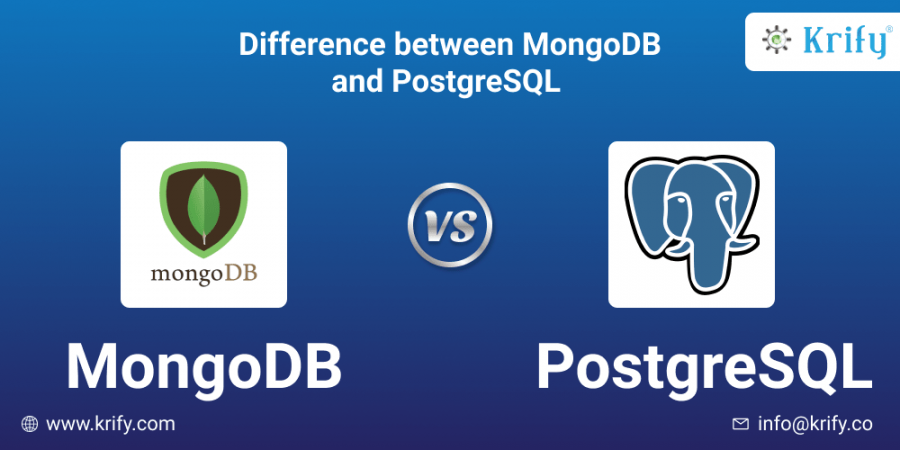Difference between MongoDB and PostgreSQL
A secure database is one of the main features of every business. You need to pick the appropriate choice to keep your data safe and process it effectively from malicious attempts, malware and other dangers increasing. However, choosing from the broad array of database options on the market today can be exceedingly challenging. MongoDB and Postgresql performance make them often utilized choices.
What is MongoDB?
The leading database document is MongoDB. Built on a distributed scale-out architecture, it has become a cloud-based comprehensive platform for data management and delivery to applications. MongoDB manages on a scale transactional, operational, and analytical workloads. The structure and syntax of MongoDB are different from typical RDMS (Relational Database Management System). It’s a database of NoSQL (Not SQL alone).
What is PostgreSQL?
PostgreSQL is an open-source ORD(object-relational database). The database stores it as structured objects instead of storing data such as documents. This is a conventional SQL database syntax and scheme. Schema is a template or structure that can be used for data validity, particularly. The schema includes different items of the schema, including tables, columns, keys, etc. Postgres has rudimentary file protection, the ability to limit IP address client connections, and compatibility with a range of different additional packages designed to make it further safer.
Difference between PostgreSQL and MongoDB
- MongoDB has an ACID compliance possibility while ACID compliance is integrated in Postgres. ACID (atomicity, consistency, isolation, durability) is the basis for the validity of data, in particular in databases for transactional operations.
- SQL databases such as Postgres are used to integrate information from several tables in one table. You can employ four sorts of joints: complete, left, right, and inner. MongoDB employs indices that are just one part of a join. The database is not for regular connections. Indexes are a kind of data structure that can be easily readable to hold a relatively tiny quantity of data. You can solve questions more effectively by simplifying and making scanning of data easier.
- For the same function as tables, MongoDB employs collections. These collections provide validation criteria and maximum size settings options. Postgres specifies tables and formats the data to be processed by a database or ETL tool in a very particular language.
- MongoDB utilizes multiple replica sets and Postgres synchronously, or 2-securely replicates data sets. Replica sets can be used to record and ‘replay’ processes as required. Synchronous replication includes simultaneous updating of various repositories or systems. Since you have updated both records simultaneously with the PostgreSQL database, it is possible to reduce errors, and the user has a full and correct backup.
- Although MongoDB cannot accommodate the KEY limitations of FOREIGN, PostgreSQL can. A foreign key can be one column or column group, which you may utilize to construct a link from several tables simultaneously. Since these restrictions discourage any activity that can break the relationships between tables and stop the insertion into external key columns of erroneous data, this might be a necessary feature for certain users.
- The aggregation pipelines of MongoDB consist of several phases for the data transformation. For queries, Postgres utilizes GROUP BY, while MongoDB utilizes the pipeline aggregation.
Conclusion:
Suppose you are in the early stages of a development project and are looking for an agile development approach to identify your needs and model data. In that case, MongoDB will shine out because developers can rework the data on a stand-alone basis. MongoDB allows you to manage data from any structure, not only from pre-defined tabular formats. PostgreSQL will do the job if you wish to use a relational database that runs complex SQL queries and works on many existing apps built on a tablet, relational data model. Both the databases have their pros and cons, so it is completely dependent on which database to be chosen for your next project.
At Krify, we have a team of professionals who are well versed with the latest trends and technologies and develop robust mobile and web applications. They are specialized in identifying which applications need a MongoDB or PostgreSQL database for the development. If you are want to learn more about MongoDB Vs. PostgreSQL performance, contact us.



